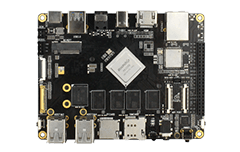1. Boot mode description¶
1.1. Preface¶
The Firefly-RK3399 is installed with the Android operating system by default. If users want to run other operating systems, they need to use the corresponding firmware to program to the mainboard.
Firefly-RK3399 has a flexible startup mode. Generally, the Firefly-RK3399 development board will not turn brick unless the hardware is damaged.
If the accident appeared in the process of upgrading, bootloader damage, leading to unable to upgrade again, while still can enter MaskRom mode to repair.
1.2. How to get the Firmwares¶
1.3. Upgrade method¶
Firefly-RK3399 supports firmware update through the following two methods:
Use the USB cable to connect the mainboard to the computer, and use the upgrade tool to program the firmware to the mainboard.
Use the upgrade card creation tool to make the MicroSD card as an upgrade card, insert the upgrade card into the mainboard, power on, and the machine will automatically perform the upgrade.
1.4. Boot media¶
eMMC interface
SDMMC interface
1.5. Boot mode¶
Firefly-RK3399 has three startup modes:
Normal mode
Loader mode
MaskRom mode
1.5.1. Normal mode¶
Normal mode is the Normal startup process. Each component loads in turn and enters the system normally.
1.5.2. Loader mode¶
In Loader mode, the bootloader will enter the upgrade state, waiting for the host command for firmware upgrade, etc.
1.5.3. MaskRom mode¶
MaskRom mode is used for system repair when the bootloader is damaged.
In general, there is no need to enter MaskRom mode. Only when the bootloader verification fails (the IDB block cannot be read, or the bootloader is damaged), the BootRom code will enter this mode. At this time, the BootRom code waits for the host to transmit the bootloader code through the USB interface, load and run it. When the board becomes bricked and cannot start or upgrade the program normally, you can also manually enter the MaskRom mode.
To forcibly enter MaskRom mode, please refer to the chapter “MaskRom mode”.
